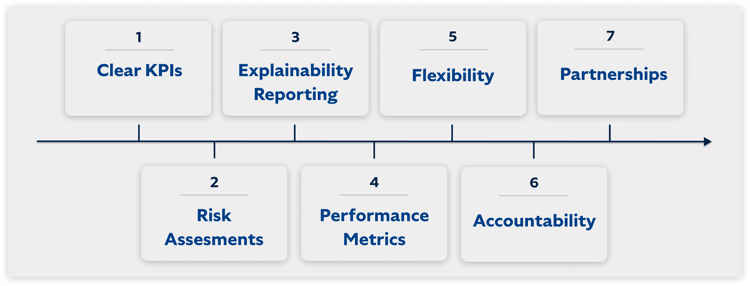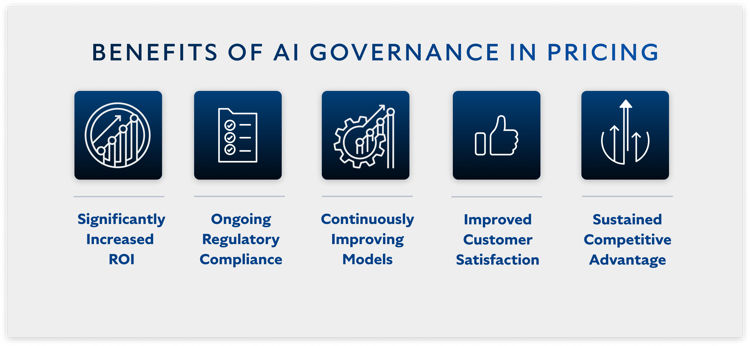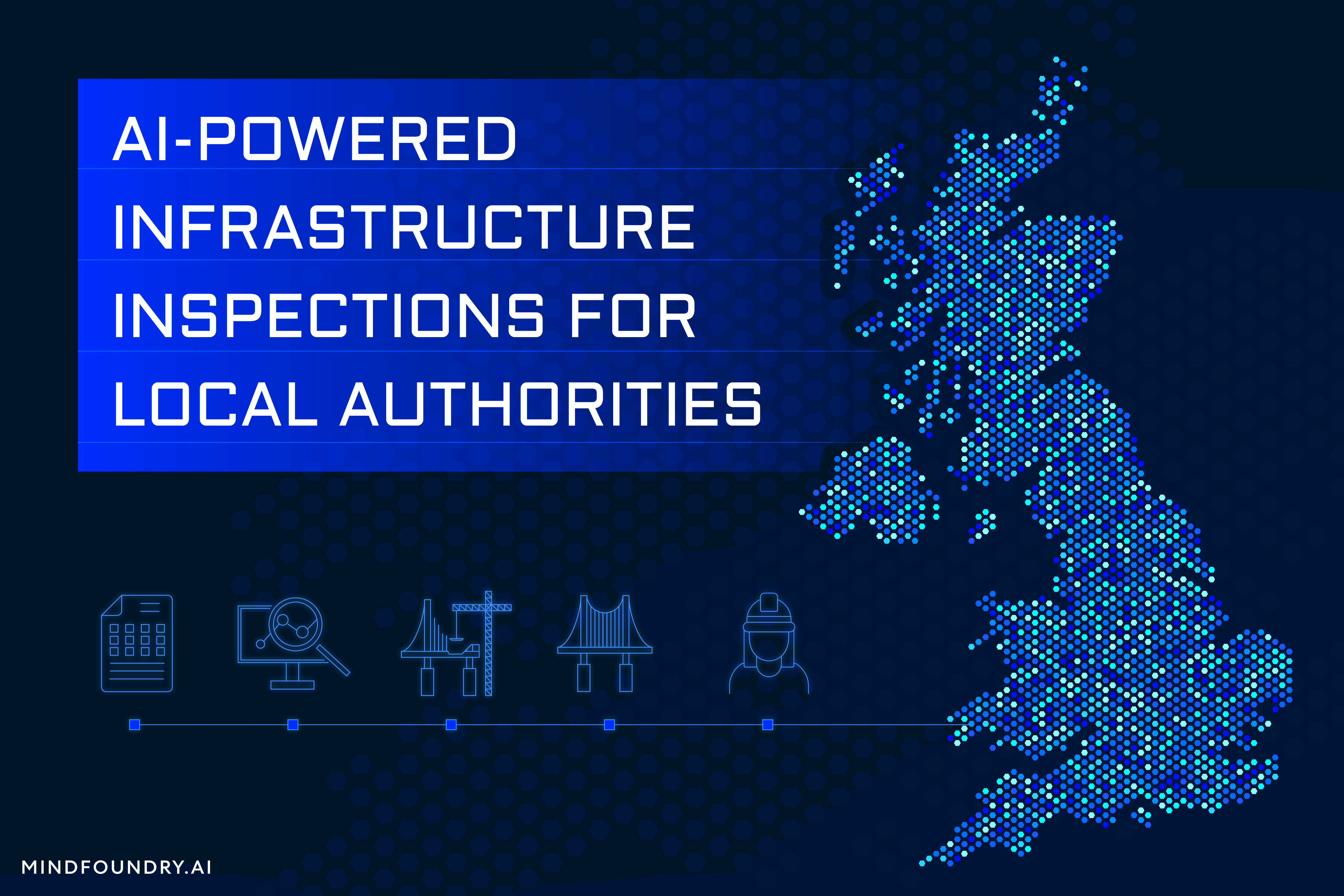AI, Insurance, and the UN SDGs: Building a Sustainable Future
Mind Foundry has been working alongside Aioi Nissay Dowa Insurance and the Aioi R&D Lab - Oxford to create AI-powered insurance solutions whose...
4 min read
Mind Foundry
:
Mar 15, 2024 11:22:40 AM

The complexity of modern pricing models, coupled with the regulatory changes that are due to come into effect this year, means that insurers need to start implementing proper AI governance. However, scaling this governance to span a business that may deploy hundreds of models is incredibly challenging, especially when managed manually in-house. In this piece, I will outline some practical steps insurers can take to scale AI governance in pricing successfully and responsibly.
Why Is Scaling AI Governance a Challenge?
AI Governance provides the assurance that all your AI is performing as required. It’s a set of principles or processes that ensure your AI is developed and deployed in a way that is responsible, ethical, and aligned with business strategies, key performance indicators (KPIs), and current regulations. Accelerated AI adoption, coupled with significant changes within the insurance industry, has made AI governance a fundamental necessity.
For insurers operating in the UK, on July 31st this year, the Consumer Duty, outlined and enforced by the Financial Conduct Authority (FCA), will come fully into effect. This will have far-reaching implications for insurers using AI and means they must be absolutely certain they are offering fair value to their customers. Failure to comply with the new rules will likely result in customer dissatisfaction, reputational damage, and significant fines. A look at AI regulations around the world shows that Consumer Duty is just one aspect of a rapidly shifting regulatory landscape that is making AI governance an essential yet complicated endeavour.

Governing a single model to operate within these parameters whilst still delivering value to the business is one thing, but a typical large insurer might have hundreds of models in production across the business. The majority of these are likely to be in the pricing department, where multiple models will be working together in complex ways to reach an optimal price quote. Each pricing model requires specific data, performs a specific function, and will soon require the necessary levels of explainability for its outputs to be examined and understood by various stakeholders, including in the event of a regulatory audit. If you are an insurer looking to scale AI, governance is something you will need to master. Here are some of the key steps that can make this a success.

Establish clear KPIs and limits for model monitoring.
You will need to understand what “good” looks like from a monitoring standpoint to quickly identify when and where any model isn’t performing as it should. One reason for this might be due to data drift, which affects nearly all ML models within their first year, and can have a significant negative impact on model performance if not addressed. Dealing with data drift is one of the biggest obstacles when it comes to scaling AI, but if you implement protocols for regularly monitoring and updating your models, including mechanisms for drift detection, you can ensure that your AI continues to deliver ROI post-deployment rather than decay and cause damage.
Conduct thorough risk assessments.
You’ll need to do this to identify potential vulnerabilities and ethical considerations with your AI deployment. The Consumer Duty will mean insurers are held accountable for the decisions of their AI systems, so you must consider what level of risk you are willing to accept before deploying your model. If you wait until a regulatory audit to discover bias or protected data usage within your models, you’re already too late. It’s imperative that you prevent these issues from happening in the first place.
Operationalise explainability reporting.
The Consumer Duty also means that you, as an insurer, will be obligated to demonstrate that your pricing solutions represent fair value for your customers. You’ll need to demonstrate a customer-centric approach by developing AI systems that can provide clear and comprehensible explanations for their pricing decisions. Doing so will help reduce the number of customer complaints which will indicate to the FCA that your pricing models are operating within the parameters of the Consumer Duty.
You can solidify these efforts by documenting the criteria and rationale underlying these pricing outcomes, ensuring necessary transparency levels are met for all stakeholders. Finally, implement discrimination and bias detection mechanisms to mitigate disparities in pricing outcomes across demographic groups.
Quantify model performance.
Once the necessary levels of security and robustness have been established, you’ll need to define operational bounds for your AI systems to ensure reliable model performance. Set benchmarks for this reliability and model consistency, incorporating feedback loops for continuous improvement. This will provide a foundation for your models’ performance that you can build on so that your AI doesn’t just maintain expected performance, it can even improve over time.
Anticipate and prepare for shifting market dynamics.
Insurance pricing is an especially dynamic and competitive area, and so pricing solutions require constant refinement and improvement. At the same time, if you foster a culture of data-driven decision-making and adaptability within your pricing teams, it will enable you to respond quicker and with greater success to unforeseen changes in the market and help you stay consistently ahead of the competition.
Define clear lines of accountability for risk ownership.
AI governance necessitates the involvement of multiple stakeholders, and it’s vital in such a core business function as pricing that everyone understands their level of accountability for risk within their respective areas.
You must do this to ensure clarity and alignment as your governance efforts scale with your AI. This will be pivotal to maintaining compliance with regulatory mandates like the recently approved EU AI Act and ISO/IEC 42001 standards.
Don’t try to do everything yourself.
It’s impossible for any organisation to possess all the necessary resources, technology, and skills by themselves to adopt AI and maximise its full potential. Establishing partnerships with AI experts in insurance can lend invaluable insight into best practices for risk management and regulatory compliance. When it comes to maintaining compliance and mitigating risk, you should use every tool at your disposal, whether that is a piece of technology, software, or domain expertise.
Bonus Benefits Beyond Compliance
The evolving regulatory landscape has meant that AI governance in insurance pricing is about to go from being a nice-to-have addition to being the absolute necessity that underpins an insurer’s entire AI adoption. However, regulatory compliance is not the only reason to implement AI governance that delivers value for an insurer’s pricing function. It can also improve customer satisfaction as insurers can sufficiently examine and, therefore, communicate to customers how and why their policy price has changed. This is significant when you consider that upheld customer complaints to the Financial Ombudsman Service (FOS) are one of the metrics the FCA will use to judge an insurer’s performance under the new Consumer Duty.

7 Steps to Set AI Governance in Motion
These seven steps provide the foundation all insurers need to implement proper, lasting AI governance. Although few in number, software solutions do exist that make it easier for insurers to take the plunge without fear, anxiety, or wasted resources. But to collaborate with these solutions correctly, you must first embrace proactive measures to mitigate risks, enhance transparency, and foster a culture of ethical AI governance.
The final piece of the puzzle is to gain access to models capable of proactively optimising their own learning so that they don’t just stay consistent but actually respond to new patterns and identify opportunities to improve their own performance. This capability is called Continuous Metalearning, and it’s one of Mind Foundry’s Three Pillars because it shapes our technologies and powers everything we do. It is one of the reasons why Mind Foundry can provide insurers with the only AI Platform for building, operationalising, and scaling AI that gets better over time, delivering real value, maintaining strategic advantage, and ensuring compliance in an ever-changing world.
Enjoyed this piece? Read our blog on Why Insurance Pricing needs AI Governance Now.

Mind Foundry has been working alongside Aioi Nissay Dowa Insurance and the Aioi R&D Lab - Oxford to create AI-powered insurance solutions whose...

Local authorities need to support their funding requests with high-quality data. The problem is that they can't obtain this data at the required...

The UK-USA Technology Prosperity Deal sees overseas organisations pledging £31 billion of investment into UK AI infrastructure. As AI investment...